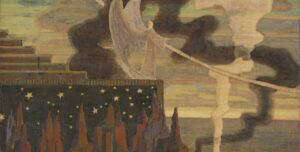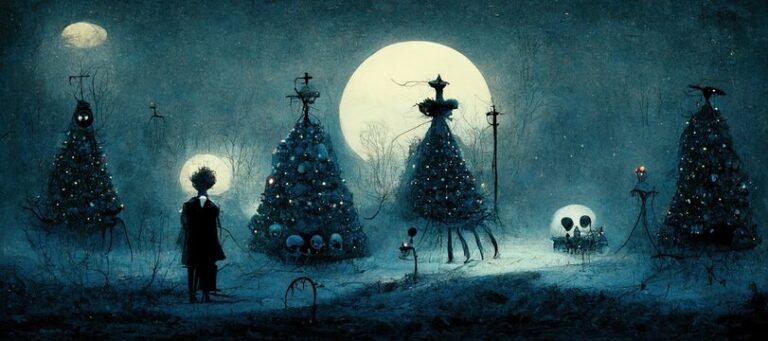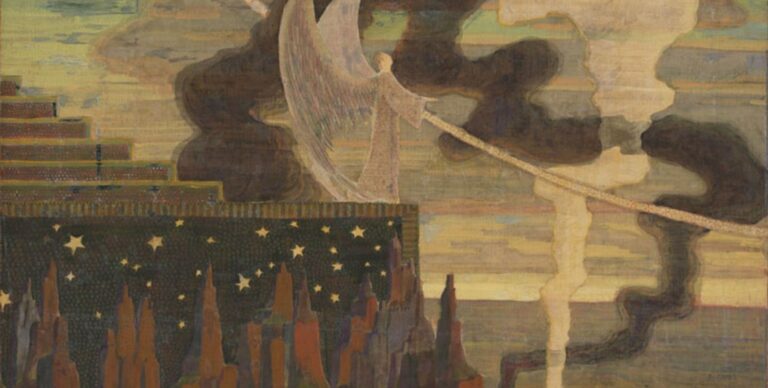 Mushishi è un fumetto delizioso come non me ne capitavano da tempo, illustrato con quello che forse non è il migliore degli storytelling possibili ma certamente disegnato con raffinatezza e buon gusto. Un fumetto ad episodi che ci porta in un mondo fantastico come può esserlo solo la mitologia giapponese, fatto di demoni e spiriti dei morti, di creature della casa e mondi onirici. Il Mushishi Ginko è uno studioso di quella varietà particolare di creature chiamate mushi, creature che si annidano nelle orecchie della gente per divorare i rumori o che si annidano nei portali dell’anima per renderne reali i sogni, creature che scorrono nel nostro mondo invisibili agli occhi ma che all’occorrenza si insinuano in un ospite umano manifestando straordinari sintomi, quasi fossero batteri soprannaturali. La psicologia del personaggio principale è per ora quasi inesistente (con due volumetti fin’ora pubblicati su un totale di 10), anche se già sul finale del primo volume si iniziano a gettare indizi sul suo passato e nuovi elementi di interesse. Tuttavia non è questo il fulcro centrale: l’oggetto del manga sono principalmente i suoi pazienti, e le storie che si incontrano sono quasi tutte storie di mesta solitudine come può esserlo solo la solitudine che segue il rivelarsi di una malattia incurabile o un lutto. Nel narrarci quindi di mistiche bestioline, Yuki Urushibara ci sta portando in una realtà molto più oscura in cui gli invalidi vengono dimenticati dalle famiglie in qualche luogo mediamente adatto alla loro condizione, in cui i paesi si svuotano attorno ad una persona considerata diversa ed in cui, in preda al rimorso e alla solitudine, non si riesce a mangiare o a dormire. E’ una realtà che vi suona familiare?
Mushishi è un fumetto delizioso come non me ne capitavano da tempo, illustrato con quello che forse non è il migliore degli storytelling possibili ma certamente disegnato con raffinatezza e buon gusto. Un fumetto ad episodi che ci porta in un mondo fantastico come può esserlo solo la mitologia giapponese, fatto di demoni e spiriti dei morti, di creature della casa e mondi onirici. Il Mushishi Ginko è uno studioso di quella varietà particolare di creature chiamate mushi, creature che si annidano nelle orecchie della gente per divorare i rumori o che si annidano nei portali dell’anima per renderne reali i sogni, creature che scorrono nel nostro mondo invisibili agli occhi ma che all’occorrenza si insinuano in un ospite umano manifestando straordinari sintomi, quasi fossero batteri soprannaturali. La psicologia del personaggio principale è per ora quasi inesistente (con due volumetti fin’ora pubblicati su un totale di 10), anche se già sul finale del primo volume si iniziano a gettare indizi sul suo passato e nuovi elementi di interesse. Tuttavia non è questo il fulcro centrale: l’oggetto del manga sono principalmente i suoi pazienti, e le storie che si incontrano sono quasi tutte storie di mesta solitudine come può esserlo solo la solitudine che segue il rivelarsi di una malattia incurabile o un lutto. Nel narrarci quindi di mistiche bestioline, Yuki Urushibara ci sta portando in una realtà molto più oscura in cui gli invalidi vengono dimenticati dalle famiglie in qualche luogo mediamente adatto alla loro condizione, in cui i paesi si svuotano attorno ad una persona considerata diversa ed in cui, in preda al rimorso e alla solitudine, non si riesce a mangiare o a dormire. E’ una realtà che vi suona familiare?

Marjorie Bowen — Raw Material
Linley was fond of collecting what he called “raw material” and, as a fairly successful barrister, he had good opportunity for doing so. He despised novelists and romancists, yet one day he hoped to become one of these gentry himself, hence his collection of the




1 Comment
Pingback:Shelidon › Kyokuto Kitan
Posted at 13:10h, 07 March[…] un’epica storia a metà tra mondo reale e mondo onirico in cui si muove Kuki, una sorta di Mushishi con la pistola. «Cosa distingue il mondo degli uomini da quello degli incubi, in cui il […]